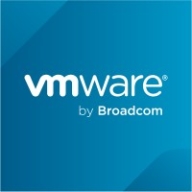

Azure Stack and VMware SDDC compete in the cloud infrastructure sector, offering solutions for hybrid and private cloud environments. Azure Stack's integration with Microsoft services appears advantageous for those already invested in the Microsoft ecosystem, while VMware SDDC's strength lies in its superior networking and virtualization capabilities.
Features: Azure Stack provides integration with Microsoft tools, offering PaaS, IaaS, SQL service, and robust security features, making it a compelling choice for leveraging Microsoft products in private cloud environments. It allows seamless integration into hybrid ecosystems and supports rapid deployments. VMware SDDC offers full control over both hardware and software, featuring advanced networking through NSX and a centralized management system. Its virtualization capabilities are enhanced with tools like SDDC Manager, supporting a comprehensive infrastructure solution.
Room for Improvement: Azure Stack could improve its networking capabilities and enhance integration with other services to match public Azure cloud offerings. Users seek a more flexible and user-friendly interface. VMware SDDC needs enhancements in automation and user interface, as well as improved compatibility with third-party solutions. Users desire better reporting and cost management features. Azure Stack focuses on expanding Azure services for hybrid setups, while VMware SDDC users require more integration ease and advanced networking functionality.
Ease of Deployment and Customer Service: Azure Stack is noted for its flexibility and ease of setup in hybrid and private cloud environments, particularly benefiting Microsoft-oriented users. Customer service experiences vary, potentially depending on support levels. VMware SDDC performs well in on-premises and hybrid deployments, featuring a strong private cloud capability, but faces criticism regarding response times and issue resolution complexity in customer support.
Pricing and ROI: Azure Stack uses a subscription pricing model, considered medium to high, with extra costs for premium support. Its pricing may be higher than competitors like AWS, but offers good ROI for users valuing Microsoft tool integration. VMware SDDC is typically seen as expensive, especially with storage and expansion costs. Its ROI varies; while Azure Stack users appreciate its scalability and seamless Microsoft tool integration, VMware SDDC justifies costs through its robust infrastructure under certain conditions.
The technicians handling the tickets do not seem very technical.
Any support we receive is through Dell EMC, as that's a policy from Microsoft itself.
They are connecting through direct connect or other connectivity between cloud and their premises infrastructure.
Monitoring, changing plans, and consolidating things are necessary parts of the process to avoid excessive costs.
Our company seeks cost-effective and more flexible open systems, and we find it difficult to integrate with third-party hardware.
On a scale of one to ten, I would rate the scalability of Azure Stack as eight.
Since VMware created this software, when problems occur, we cannot handle them as we are not developers and need good support.
Management looks for a balanced product that utilizes existing hardware, fulfills external customer demand, and leverages the scalability of the cloud model.
Many resources get created in Azure Stack, and managing those resources can be challenging.
The precision of anonymous activity tracking should be improved, particularly in identifying the correct location because IP information is sometimes inaccurate.
They need to improve their support because of new management, policies, and pricing, and they are not offering discounts.
If Microsoft lowers the price, more small businesses would be able to adopt the Enterprise E5 license.
They allow me to track all user activities.
I am very much impressed with Azure Stack, especially regarding security, complete compliance, data sovereignty, and data security.
We wanted to proceed with an integrated solution from the same cloud provider, so we are using Azure Stack.
The flexibility is excellent as we use storage policies, and whenever any VM or dynamic allocation is needed, it is automatically handled by VMware without physical intervention.
| Product | Market Share (%) |
|---|---|
| Azure Stack | 36.2% |
| VMware Software Defined Data Center | 19.7% |
| Other | 44.099999999999994% |


| Company Size | Count |
|---|---|
| Small Business | 32 |
| Midsize Enterprise | 13 |
| Large Enterprise | 25 |
| Company Size | Count |
|---|---|
| Small Business | 11 |
| Midsize Enterprise | 4 |
| Large Enterprise | 17 |
The VMware approach to the SDDC delivers a unified platform that supports any application and provides flexible control. The VMware architecture for the SDDC empowers companies to run hybrid clouds and to leverage unique capabilities to deliver key outcomes that enable efficiency, agility, and security. Enterprises using VMware technology have three ways to establish an SDDC and transition at their own pace: build their own using reference architectures; use a converged infrastructure; or use a hyper-converged infrastructure for which the full SDDC is delivered already implemented on the customer's hardware of choice.
We monitor all Software Defined Data Center (SDDC) reviews to prevent fraudulent reviews and keep review quality high. We do not post reviews by company employees or direct competitors. We validate each review for authenticity via cross-reference with LinkedIn, and personal follow-up with the reviewer when necessary.